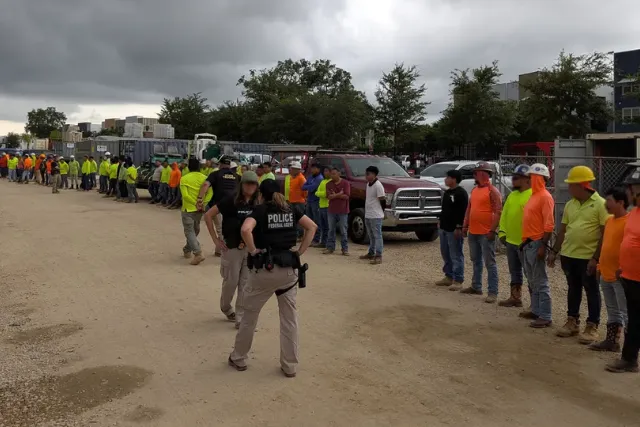
In an already stretched construction labor market, raids by U.S. Immigration and Customs Enforcement (ICE) at jobsites are creating a new wave of challenges for contractors. These raids not only remove workers from active projects but also drive up costs, slow project timelines, and introduce significant financial risk.

The U.S. construction industry has long grappled with a shortfall of skilled labor — currently estimated at 439,000 workers nationwide. Immigrant workers have been instrumental in bridging that gap. According to the Bureau of Labor Statistics, 34% of construction workers are immigrants, compared to 19% in the overall workforce. In some specialized trades, such as drywall installation and plastering, that number surpasses 60%.
These statistics underscore why construction projects are an increasingly frequent target for immigration enforcement. Unfortunately, the impact extends beyond undocumented workers — reports of indiscriminate detainments are sowing fear among even legal residents and U.S. citizens working onsite.
“The U.S. construction industry has faced chronic labor shortages for decades, with a shortfall of 439,000 workers. Immigrant workers have helped close the gap and now make up a considerable part of the workforce,” said Chris Coleman, partner-in-charge of RubinBrown’s Construction Services Group.
Coleman emphasizes that while lobbying efforts may push for a more balanced federal enforcement approach, contractors must act now to safeguard their operations.
The first step is ensuring all employment verification processes are airtight. “The simplest thing companies can do is to audit themselves to ensure that employment verification and I-9 processes have been properly followed,” Coleman notes. Managers should also be trained to navigate complex labor laws to avoid compliance pitfalls.
When raids disrupt projects, relationships with local labor unions, merit-based trade associations, and specialty contractor groups can be lifelines. These organizations can quickly connect builders with skilled replacement labor to keep projects moving.
Rather than self-performing, some contractors are turning to specialty subcontractors to handle critical phases of a build, spreading labor risk across multiple companies.
Relying solely on external labor pools is not a complete solution. Coleman recommends investing in cross-training existing employees, enabling them to pivot across multiple trades when necessary.
“These programs enable employees to acquire complementary skill sets through on-the-job learning, thereby enhancing workforce agility and reducing reliance on specialized labor,” he explains. A cross-trained team is more adaptable, ensuring that unexpected disruptions — such as a sudden labor raid — don’t completely stall progress.
One unavoidable reality is that securing reliable talent may cost more.

“It’s something many stakeholders don’t want to hear, but as the market tightens, owners are finding themselves paying more for talent,” Coleman says. “In an industry where talented craftspeople regularly get poached by competitors, paying above-market premiums may be the only solution.”
While this can erode profit margins, the alternative — losing project momentum — can be far more damaging, leading to penalties, missed deadlines, and reputational harm.
Even the best workforce strategies can’t fully absorb unplanned labor spikes. Coleman advises negotiating cost-plus contract clauses or partial reimbursement provisions so that clients share in the cost burden of unexpected labor shortages.
“Because these contracts are based on forecasts happening months in advance, they are critical to limiting cost exposures,” he explains.
Labor has always been a fundamental building block of the construction industry. In today’s climate, with ICE raids magnifying shortages, workforce strategy is no longer optional — it’s a core element of survival.
The message from experts is clear: Audit your compliance, deepen your labor networks, invest in training, be prepared to pay for talent, and renegotiate contracts where possible. The companies that adapt quickly will be the ones still meeting deadlines — and still in business — in the years ahead.
Originally reported by Chris Coleman in Construction Dive.